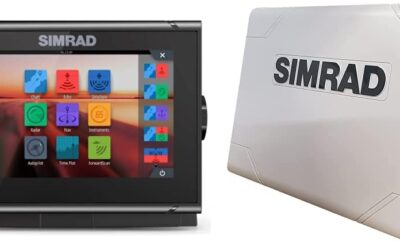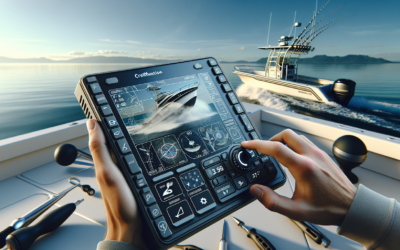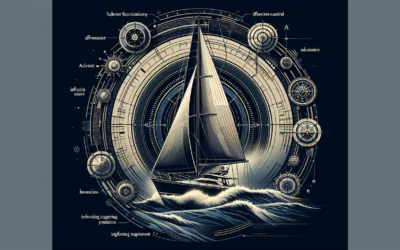It’s fascinating how nature works sometimes, isn’t it? In “The Impact of Water Temperature: How Fish Finders Adapt to Seasonal Changes,” you’ll get to unravel the mystery of how fish finders adapt and respond to the rhythm of the seasons. This insightful piece goes beyond the traditional knowledge of fish finders, delving into the science of how water temperature changes, driven by seasonal variations, influence the efficiency of these devices. The discussion of how these machines strive to maintain accuracy, despite the surrounding elemental shifts, is sure to leave you with a renewed appreciation for technology’s resilience in nature.
Understanding Fish Finders
You might be wondering, what exactly is a fish finder? Well, let me break it down for you. A fish finder is an incredibly useful piece of technology that can vastly improve your fishing experience. It is a device used to locate and display the presence of fish under the water. They can even depict the underwater environment, including depth and structure. It’s like your personal underwater eye!
What is a Fish Finder
At its core, a fish finder is a tool that shows you where the fish are, taking a lot of guesswork out of fishing. But it’s more than that, it’s a sonar device that works by sending sound waves into the water and interpreting the echo when those waves hit an object – like a fish!
How Fish Finders Work
Fish finders work on the technology of sound waves and echo-location. It emits a sound wave and when the wave hits an object, such as a fish, it bounces back to the device. By measure the time it took for the echo to return, it can calculate the distance of the object. The echoed sound wave signature can also help determine the size and shape of the object, and all this information is then translated into an image you can interpret.
Types of Fish Finders
Just like any other technology, fish finders come in a variety of styles and capabilities. Some of the more popular types include stand-alone, combination, and networked systems. Stand-alone units are great for small boats with limited space, while combination units can provide GPS navigation as well as fish finding capabilities. Finally, networked systems are typically found on larger boats and can include a range of inputs like radar, GPS, video, and more.
Importance of Water Temperature to Fish
When it comes to the importance of water temperature to fish, it’s crucial to their behavior and survival.
Fish behaviour and water temperature
Fish are cold-blooded creatures. This means their body temperature changes with the water temperature. Because of this, water temperature can greatly affect a fish’s activity level. For example, when the water is cold, fish are usually less active.
Fish migration and temperature
Temperature also plays a major role in fish migration. Different species migrate at different water temperatures. Some fish move to warmer waters during the colder months and return once the water temperature rises.
Temperature ranges for different species of fish
Different species of fish prefer different temperature ranges. Whether you’re targeting bass, trout, catfish, or another species, knowing the optimal water temperatures for your target species can significantly improve your fishing success.
Impact of Seasonal Changes on Water Temperature
When it comes to how the seasons impact the temperature of the water, it’s all about weather patterns and sunlight.
Effects of spring changes
As winter transitions into spring, the waters begin to warm up. This can activate fish to start feeding after a long winter, and make them more active and easier to catch.
Effects of summer changes
In summer, the water at the surface can become quite warm due to increased sunlight. This may lead to fish going deeper into the water where it’s cooler. So, during this time, you may need to adjust your fishing strategy.
Effects of autumn changes
As we move into the cooler months of fall, water temperatures start to drop, driving fish to seek the deeper warmer layers of water. During this time, fish may also need to feed more in preparation for the winter months.
Effects of winter changes
In winter, water temperatures are at their lowest. Fish usually become slow and more challenging to catch because they move less and eat less.
How Fish Finders Detect Temperature Changes
Some modern fish finders can also help detect changes in the water temperature.
Fish finder technology and temperature detection
Many fish finders have built-in temperature sensors that relay real-time data back to the display. They allow you to see temperature changes, track cold and warm currents, and can help you find fish regardless of the season.
Accuracy of temperature detection
Fish finder thermometers are usually quite accurate. However, remember that the location of the sensor can affect readings. Most sensors are located in the transducer, so they measure surface water temperature.
Interpreting temperature data
Interpreting temperature data from a fish finder can be a game-changer. It allows you to identify sudden temperature changes that could indicate the presence of your target species. Learning to interpret the data accurately can really improve your catch rate.
Adapting Fish Finders to Seasonal Changes
To make the most out of your fish finder, it’s important to learn how to adapt it to suit different seasonal changes.
Adjusting settings for temperature changes
Fish finders generally have adjustable settings that allow you to account for changes in the water’s temperature. You can set your fish finder to focus on specific depths, which can be useful when fish move deeper due to temperature changes.
Using fish finders in different seasons
Being able to use a fish finder effectively in different seasons is key to sustainable angling success. Understand the habits of your target species throughout the seasons, and how they relate to temperature changes.
Tips for optimizing fish finder use during temperature fluctuations
By optimizing fish finder use during temperature fluctuations, you can adapt to changing conditions. For example, during a sudden cold snap, fish may move deeper into the water, so adjusting your fish finder to scan deeper can be beneficial.
Case Studies of Fish Finders and Temperature Changes
There are several examples of how fish finders significantly aided anglers in figuring out temperature changes in the water.
How professional anglers use fish finders
Professional anglers often rely heavily on fish finders. By constantly monitoring water temperature and adjusting fishing strategies accordingly, they potentially increase their catch.
Success stories of adjusting fish finders for temperature
There are many success stories of anglers catching more fish by properly adjusting their fish finders to changing water temperatures.
Lessons learned from failures
Failures can be just as helpful as success stories when it comes to learning how to use a fish finder optimally. By analyzing these failures, you can avoid common pitfalls, like misinterpreting data or not adjusting the fish finder to the correct depth.
Challenges in Using Fish Finders During Temperature Changes
Using fish finders during temperature changes may present challenges.
Technical difficulties
Challenges could include technical issues with the equipment. For example, the sensor might not be functional, or the display unit might not correctly interpret the data.
Misinterpretation of data
Misinterpretation of the data can also be a problem. Remember, the displayed data is only as useful as your ability to interpret it accurately.
Environmental factors impacting results
Various environmental factors, such as changes in water currents or surface clutter, can also impact results and make it difficult to interpret the data accurately.
Future of Fish Finders and Temperature Detection
The future of fish finders and temperature detection promises even more sophisticated technology.
Emerging technologies in fish finders
Emerging technologies in fish finders might include improved temperature sensors, more in-depth data interpretation, and perhaps even predictive capabilities.
Impact of climate change on water temperatures and fish finders
Climate change is causing shifts in water temperatures, which can influence fish behaviors. Fish finders will need to evolve with this change, making them an even more crucial tool for success.
Predicted advancements in fish finder technology
In the future, we may see advancements such as artificial intelligence and machine learning integration, allowing fish finders to adapt and learn from accumulated data over time, leading to more accurate predictions and readings.
Tips for Anglers Using Fish Finders in Seasonal Changes
Here are some key tips if you’re planning to utilize fish finders during seasonal changes.
Best practices for adjusting fish finders
Remember to consistently check and adjust your fish finder settings based on your target species and the current season. Understand how different species respond to temperature changes to use your tool effectively.
Common mistakes to avoid
Avoid the mistake of not regularly updating your fish finder. Keep the software up-to-date, and you’ll always have access to the newest features.
Resources for learning more about fish finders and temperature
There are many resources available if you want to learn more about using fish finders. Check out the vast selection of books, online forums, and guides for more insights.
Conclusion
Water temperature is a critical factor in fishing, and understanding its impact can significantly affect your success. Mastering your fish finder and using it to adapt to temperature changes can make your fishing experience more rewarding.
Fish finders play a critical role in successful fishing by providing invaluable information about the depth and location of the fish. With advancements in technology, fish finder tools will only become more precise and useful.
As the climate continues to change, the importance of understanding water temperatures and fish behaviors will only grow. Looking forward, we can likely expect even more impressive advancements in fish finder technology. With new innovations and ongoing learning, the future of fishing looks brighter than ever.









